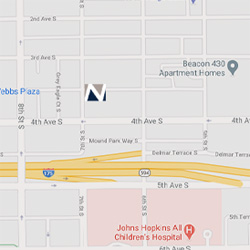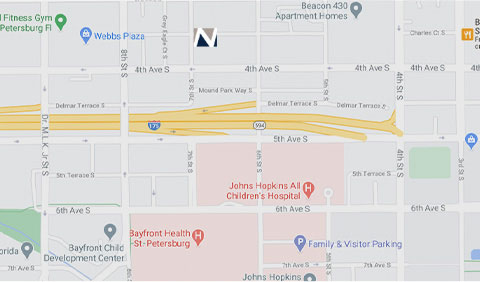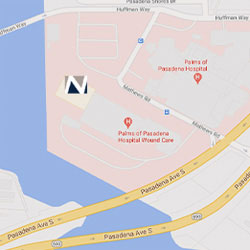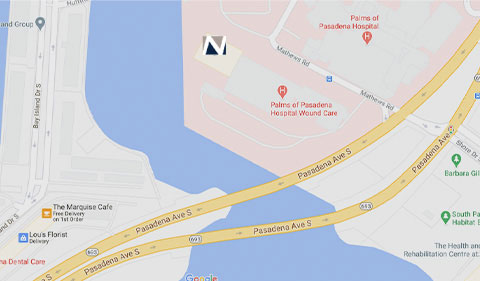Learn Even More About Skin Care in St. Petersburg and St. Pete Beach (South Pasadena)
The Nelson Dermatology blog is updated regularly to provide information on skin health and beauty.
Do BOTOX® and Fillers Provide the Same Benefits?
Thinking of having a cosmetic procedure to rejuvenate your skin this spring? Injectables like BOTOX® and dermal fillers are an ideal choice for any time of the year since, unlike some other treatments, they have little to no downtime and the seasonal weather changes will have no noticeable impact on results. Many patients, especially those are who new to injectable treatments, know that they want to enhance their facial appearance to look more youthful, energized, and healthier, but are confused about which type of injectable will be best for them. Many people mistakenly believe that BOTOX® and facial fillers at our St. Petersburg office accomplish the same things and could be used interchangeably, but this isn’t the case.
The truth is that while there are some similarities between these two wrinkle injections, the way they work and the types of concerns they target are completely different. The best way of finding out for sure which option would be ideal for you is by consulting a dermatologist, but it helps to gather as much information as you can about the treatments before. See below for a simple explanation of how each of these cosmetic techniques addresses signs of aging.
BOTOX®
BOTOX® is a prescription medication that gets its name from its primary active ingredient, botulinum toxin. This substance temporarily keeps facial muscles in the areas where it is injected relaxed by blocking messages from the nerves. The treatment is designed for dynamic wrinkles, which are visible when the face is in motion and are the result of habitual facial expressions. Some common examples of wrinkles that can be corrected with BOTOX® include crow’s feet, frown lines, and forehead wrinkles.
Facial Fillers
Facial fillers usually contain hyaluronic acid. This hydrophilic (water-loving) molecule is contained in the skin itself and used to regulate hydration by holding onto water in the skin’s surface. Fillers are soft, clear gels injected beneath the surface of the skin, taking the place of collagen, fat, or other substances the skin is lacking. Fillers are used on static wrinkles, such as nasolabial folds, which typically form on the lower third of the face and are caused by collagen deficiency.
To get more advice on injectables in St. Petersburg, contact Nelson Dermatology today. Submit a contact form or call us at 727-895-8131 if you have questions about these treatments.
What Are the Benefits of IPL (Intense Pulsed Light)?
Everyone’s heard that too much exposure to ultraviolet (UV) radiation—whether from the sun or artificial sources such as tanning beds—is one of the worst things that can happen to our skin. The UV light significantly increases the risk of skin cancer developing and causes skin cells to break down, resulting in signs of premature aging like wrinkles. But not all forms of light exposure are harmful to the skin. In fact, light-based therapy is one of the most effective ways of creating a more even complexion by reducing irregularities on the skin’s surface. Intense pulsed light (IPL) treatments from our St. Petersburg and St. Pete Beach based team are a gentler alternative to laser skin resurfacing and can target a variety of common skin-related concerns at the same time.
Read on for some of the main benefits associated with this procedure:
Lightening Unwanted Pigmentation
IPL photo-rejuvenation treatments target melanin and hemoglobin in the skin, making them ideal for correcting uneven pigmentation. The light precisely targets damaged or pigmented skin cells, so the treatment can be beneficial for rosacea (flushed skin on the face), birthmarks, hyperpigmentation (such as sunspots, liver spots, and freckles), melasma, broken blood vessels, spider veins, and discolored skin. Patients love IPL treatments because they improve and blend brown and red discolorations, reducing their need for coverup and giving them the freedom to look their best without makeup.
Improving Scars and Stretch Marks
IPL can enhance the overall look and feel of the skin by encouraging collagen production to improve skin texture. It also helps to fade discoloration and improve broken blood vessels caused by scars, making it a great treatment for most types of scars and stretch marks.
Resolve Other Skin Concerns
In addition to correcting blotches and spots on the skin, IPL can also target dilated pores, fine lines, and wrinkles.
Easily Managed Recovery
Another advantage of IPL treatments is that they require minimal downtime, and patients will be able to return to their normal activities with very few limitations. Side effects are minor and will resolve within a few weeks at most.
To learn more about energy-based skin resurfacing options—such as laser or IPL treatments—contact us at Nelson Dermatology. Reach out online by filling out a contact form, or call us at 727-895-8131 to request a consultation.
What Can You Do to Extend the Lifespan of BOTOX® Injections?
Wrinkles such as “the 11’s”, forehead lines, crow’s feet and bunny lines give character to our face, but there’s no harm in making the skin look a little smoother and fresher. A few units of botulinum toxin type A injections, also known as neuromodulators, will relax the facial muscles by stilling contractions to prevent the skin from creasing, so you’re left with a less-wrinkled surface. BOTOX® from our St. Petersburg and St. Pete Beach based offices is a temporary treatment that lasts for up to four months in most cases. Our patients tend to love their results, which can be sad once the effects wear off. Luckily, the results can be easily reproduced and become longer lasting with ongoing BOTOX® injections.
Lockdowns, COVID restrictions, and everyday schedule hiccups can make it difficult to get back in for repeat BOTOX®injections to maintain your desired look. However, don’t lose hope if you want to keep wrinkles and lines at bay for a little longer. See below for some at-home tips to prolong the effects of minimally invasive wrinkle injections.
Avoid Extreme Facial Expressions
The constant muscle movements involved in scowling, frowning, reacting with surprise, and other facial expressions are what lead to the development of dynamic wrinkles. While BOTOX® targets the muscles responsible, the effects can wear off faster if there’s a lot of activity in the area. Avoid making facial expressions that would typically crease the treated areas, if possible.
Take Zinc Supplements
Some research suggests that the effectiveness of BOTOX® is affected by zinc levels within the body, so you can take a zinc supplement to potentially prolong the effects.
Avoid Sun Damage
Ultraviolet radiation accelerates the formation of wrinkles. Wear broad-spectrum SPF each day and limit your exposure to sunlight.
Manage Stress Levels
Chronic high stress levels accelerate aging by causing collagen to degrade, resulting in the skin losing its elasticity. To keep wrinkles at bay and prolong the benefits of BOTOX®, try using yoga, meditation, deep breathing, or other stress management techniques.
Minimally invasive injectables give you a more refreshed, younger appearance without much downtime and with virtually no side effects. Our team can help you decide which wrinkle treatment is best for achieving your goals. For more information on BOTOX®, contact us at Nelson Dermatology. Reach out online or call 727-895-8131 to request a consultation.
5 Essential Tips for Mohs Surgery Recovery and Beyond
If you notice a mole or lesion on your skin that seems to be suspicious, it’s important to see a dermatologist, who can make a diagnosis and determine whether the growth is dangerous or even possibly cancerous. Although there are many different options for treating skin cancer, Mohs surgery has the highest cure rate (over 99 percent in studies), and is the best option for cancer that forms on highly visible areas, such as the face. Mohs surgery, provided in both our St. Petersburg and St. Pete Beach locations, is the ideal treatment for the most common forms of skin cancer: basal cell carcinomas (BCCs) and squamous cell carcinomas (SCCs).
The treatment involves removing the minimal necessary skin in the treatment area, and then mapping and microscopically examining the tissue margins for any remaining cancer cells right away. We repeat this process as needed until there is no sign of any cancerous cells in the skin. This results in the highest possible cure rate while removing the minimal necessary skin, and leaving the surrounding healthy skin intact and undamaged.
After all of the skin cancer is removed, patients can choose to either allow the wound to heal on its own—which may be best if it’s small or located in an area that’s easy to conceal—or to have the wound closed with stitches. Our physicians specialize in cosmetic reconstruction following Mohs surgery and will help you to achieve the best possible cosmetic outcome with a minimal or nearly imperceptible scar in most cases.
Here’s what you can do to have a smoother and faster recovery, either way:
1. It’s normal to experience some swelling and bruising in the treatment area. Patients can manage mild to moderate discomfort by taking over-the-counter painkillers like acetaminophen (Tylenol) or ibuprofen (Advil, Motrin). Stronger prescription pain relief medications may sometimes be needed, and this can be discussed with your doctor.
2. It’s also normal to have slight bleeding post-operatively, but in rare cases you might experience active bleeding. Patients can stop this by using firm pressure with a dry cloth or gauze for around 20 minutes. If the bleeding continues, contact us directly.
3. To give yourself time to heal and avoid complications, don’t engage in heavy physical activity—including bending or working out—for the first week after your surgery.
4. Our team will provide you with detailed wound care instructions. Follow these closely to avoid complications.
5. Be aware of signs of infection, such as redness around the wound and worsening pain. If you notice these signs, contact us right away.
Our experienced and board-certified Mohs surgeons and dermatologists can recommend the most effective treatments for skin cancer or other dermatologic conditions. Learn more about what’s involved in Mohs surgery by contacting us at Nelson Dermatology. Contact us online or by calling 727-895-8131 to request an appointment.
What Do Pre-Cancerous Skin Growths Look Like?
When you spend too much time in the sun, the exposure can cause short-term consequences—such as burning the outer part of the skin, resulting in a temporary sunburn—but ultraviolet light also gets into the inner layers, resulting in permanent DNA damage and killing skin cells. These changes lead to premature aging, causing the skin to become wrinkled, leathery, dried out, and uneven. It can also increase a person’s risk of skin cancer, including by causing precancerous skin growths to develop. So what exactly are these lesions?
Cumulative, unprotected exposure to sunlight or artificial tanning may eventually lead to the formation of actinic keratoses, also known as solar keratoses or premalignant lesions. It’s important to monitor your skin for these growths and to have them examined and treated by a professional, because while they aren’t cancer, some types can eventually evolve into skin cancer. Our St. Petersburg and St. Pete Beach based Nelson Dermatology team is sharing these tips to help you recognize potential pre-cancerous skin lesions before they have the chance to develop further and become truly dangerous.
Note that the signs of actinic keratosis can often seem very similar to skin cancer, but the lesions are usually less obvious and may also be confused for age spots. Pre-cancerous growths may vary greatly in size and appearance.
• They’re usually found on areas of the body that are frequently exposed to the sun, such as face, lips, ears, forearms, scalp, neck, and the backs of the hands.
• They typically appear as small, wart-like skin lesions (they’re usually less than an inch in diameter) that have a dry, scaly, or rough and sandpapery texture. Sometimes it’s easier to identify them based on their texture rather than color.
• They usually have a reddish or pinkish color, but can also vary in hue and may appear as white, tan, flesh-toned, or brownish spots.
• They resemble flat or slightly raised bumps on the surface of the skin.
• Symptoms such as bleeding, burning, itching, and crusting are common.
• There are usually several growths, and they may be located close together on one area of skin.
If you’re concerned about a new or changing spot on your skin, contact us to have it examined. For more advice on identifying pre-cancerous skin growths and skin cancer, contact our team at St. Petersburg and St. Pete Beach based Nelson Dermatology. Contact us by calling 727-895-8131, or book a consultation online to get started.
Coming Soon
We will get back with new updates soon. Thank you for visiting.






